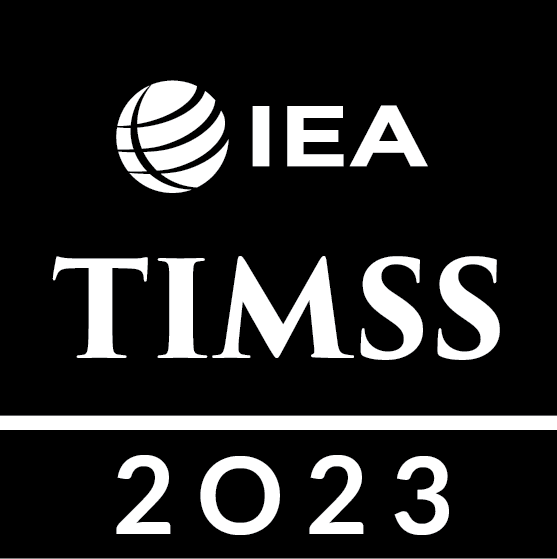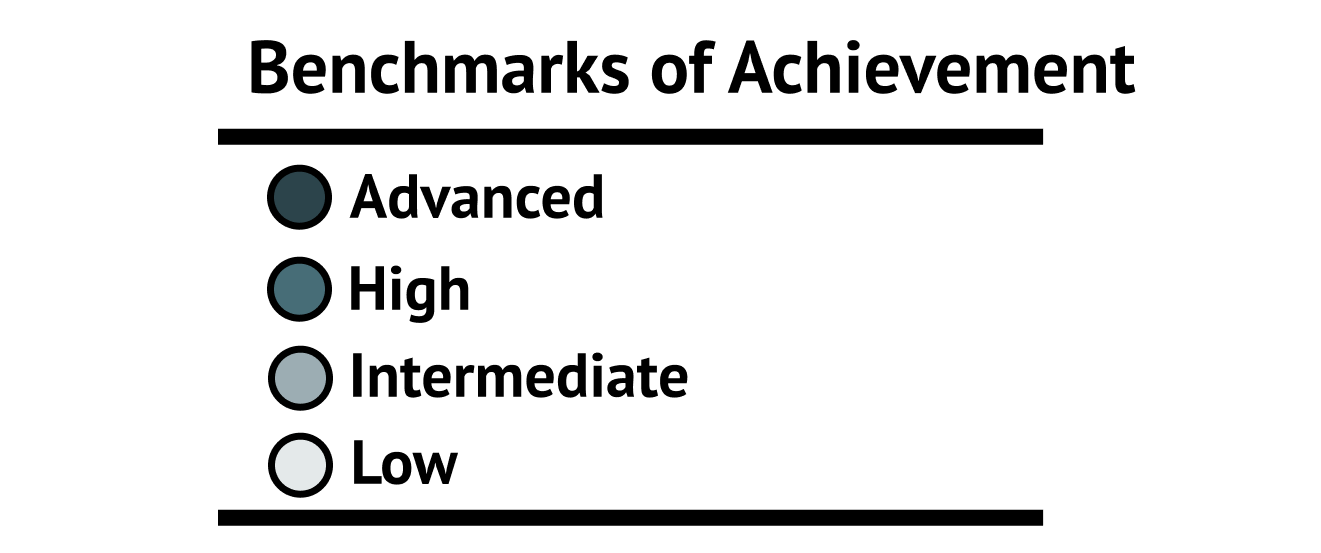Percentages of Students Reaching International Benchmarks of Science Achievement
Exhibit 2.2.4 provides graphical and numerical representations of the percentages of eighth-grade students reaching each TIMSS 2023 International Benchmark in participating countries and benchmarking entities. The International Benchmarks function like steps on a ladder: If students reached a higher benchmark, they also reached each of the lower benchmarks. The percentages do not add up to 100%, but rather indicate cumulative proportions: The lower the benchmark, the higher the proportion of students reaching that benchmark. Conversely, the higher the benchmark, the lower the proportion of students reaching it. The exhibit also provides the standard error (in parentheses) associated with each of the estimated percentages.
As a point of reference, the exhibit reports the international median of the percentage of students reaching each International Benchmark across 42 participating countries with internationally comparable data, instead of an average as is displayed in other report exhibits for average achievement. By definition, half of the countries will have a percentage in the column above the median and half will be below the median.
In TIMSS 2023, the percentage of eighth-grade students reaching the Advanced Benchmark ranged from 47 percent to 0 percent. The majority of countries had fewer than 20 percent of students reaching the Advanced Benchmark. Across the 42 countries, the median percentages of students reaching each benchmark were 6 percent at the Advanced Benchmark, 27 percent at High, 56 percent at Intermediate, and 80 percent at Low. The percentage of students reaching the Low Benchmark ranged from 97 percent to 18 percent. In 14 countries, 90 percent or more of the eighth-grade students internationally reached the Low Benchmark, which can be considered a level of minimum science proficiency. Five additional countries had at least 85 percent but fewer with than 90 percent of students reaching the Low Benchmark. The exhibit allows sorting by percentage of students reaching each International Benchmark and selecting groups of countries, facilitating the examination of relative differences in the percentages of students reaching the different levels of proficiency described by the TIMSS 2023 International Benchmarks.
Read More
Exhibit 2.2.4: Percentages of Students Reaching the International Benchmarks of Science Achievement
Science Grade 8

Country
Advanced
Benchmark (625)
High
Benchmark (550)
Intermediate
Benchmark (475)
Low
Benchmark (400)
( ) Standard errors appear in parentheses. Because of rounding some results may appear inconsistent.
See Appendix B.7 for population coverage notes 1, 2, and 3. See Appendix B.10 for sampling guidelines and sampling participation notes †, ‡, and ≡.
Ψ Reservations about reliability because the percentage of students with achievement too low for estimation exceeds 15% but does not exceed 25%.
Ж Average achievement not reliably measured because the percentage of students with achievement too low for estimation exceeds 25%.
New Zealand did not satisfy guidelines for minimum school participation rates. Achievement could not be reliably estimated for Cote d’Ivoire.
Suggested Citation
von Davier, M., Kennedy, A., Reynolds, K., Fishbein, B., Khorramdel, L., Aldrich, C., Bookbinder, A., Bezirhan, U., & Yin, L. (2024). TIMSS 2023 International Results in Mathematics and Science. Boston College, TIMSS & PIRLS International Study Center. https://doi.org/10.6017/lse.tpisc.timss.rs6460
